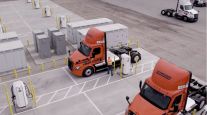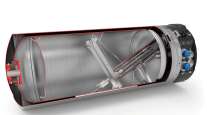Senior Reporter
NACFE Report Covers Electric Vehicle Charging Infrastructure
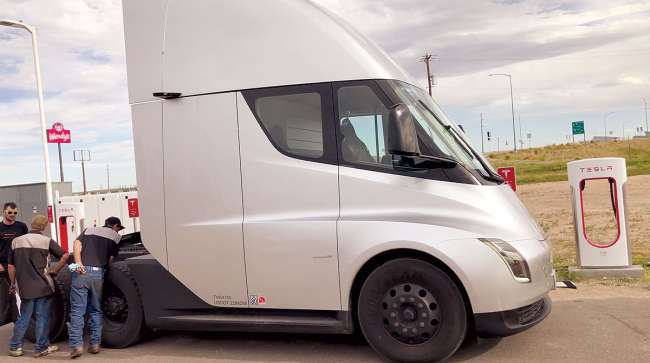
Charging infrastructure has been identified as one of the largest unknowns and sources of anxiety for fleets considering near-term adoption of battery-electric vehicles, according to the North American Council for Freight Efficiency.
At the same time, near-term gains are possible with medium-duty and drayage applications, NACFE Executive Director Mike Roeth said during a media conference call to review “Amping Up: Charging Infrastructure For Electric Trucks,” its latest guidance report on future technology.
“We do discuss larger trucks throughout the report, but in a more limited way because we just don’t know enough yet. But we do plan to update this report as more progress is made in those areas,” Roeth said.
Some key initial steps can help fleets succeed in charging the zero-emissions vehicles, especially when charging multiple vehicles or those with large batteries on-site, NACFE concluded.
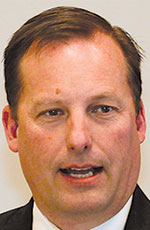
Roeth
One is using smart-charging software that can minimize infrastructure capital, installation costs and operating expenses — and help a fleet get the best rate possible from their utility and ensure the trucks are ready to go when needed, said Jessie Lund, the author of the NACFE report, and an associate at the Rocky Mountain Institute, which supports the findings.
“Electric charging for the foreseeable future is going to be private, or what we are calling depot or return-to-base charging,” Lund said. “While there are some tentative plans out there for public fast-charging networks across main corridors throughout the country that would be capable of quickly charging commercial vehicle batteries, we don’t see that as a reality for the immediate future.”
Another key initial step is that fleets are going to have to work closely with utilities, and start the process as soon as possible and allow plenty of lead time, she said.
“We are already seeing some utilities work with fleets to offer make-ready options and programs that can help ensure facilities have the needed electrical distribution infrastructure,” she said, including adequate transformers and conduit, and, potentially, new separate meters for electric vehicle charging.
Many make-ready programs are in California now, she said, and she expects this make-ready trend to continue as more utilities target programs for commercial fleets.
Utilities want the business from commercial vehicles in order to sell more electricity or help meet state and local sustainability goals, Lund said.
“So fleets shouldn’t be shy in working with them and telling them what they need,” she said.
The full report includes a list of charging infrastructure suppliers and utilities with electric charging programs. It also includes insights from fleets, electric truck makers, manufacturers of charging infrastructure, energy groups and standards-setting organizations,
In related news, the California Air Resources Board during a recent workshop said it is aiming to get approved by the end of the year a regulation requiring a certain percentage of all trucks sold in the state to be electric or hydrogen fuel-cell trucks.
One possible CARB mandate would have truck makers ensure that 2.5% of their overall sales are of electric trucks beginning in 2024. That could increase to 15% by 2030, possibly, under the emerging proposal.
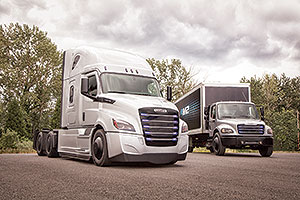
Daimler's eM2 (right) with Freightliner's eCascadia. (DTNA)
Meanwhile, Daimler Trucks North America showcased its eM2 at the 2019 Work Truck Show March 5-8. The truck is designed for local distribution, pickup and delivery, and last-mile logistics applications.
DTNA recently delivered the first eM2 to Penske Truck Leasing for real-world testing as part of the Freightliner Electric Innovation Fleet, reflecting DTNA’s co-creation approach with customers to co-develop technology that shapes the future of transportation.
The Innovation Fleet is partially funded by a $16 million grant from the South Coast Air Quality Management District in California.
Series production of the eM2 begins in 2021.
Further, an investor coalition is calling for deep decarbonization of the utility sector.
“While we hope to see utilities thrive by taking bold action on climate, the current plans and commitments of many utilities fall short of what is needed to align with a Paris Accord-compliant future, exposing companies and their investors to significant climate risk including from stranded assets, physical damage to infrastructure, loss of social license to operate, and customer defection, among others,” said Lila Holzman, energy program manager at the shareholder advocacy group As You Sow.


